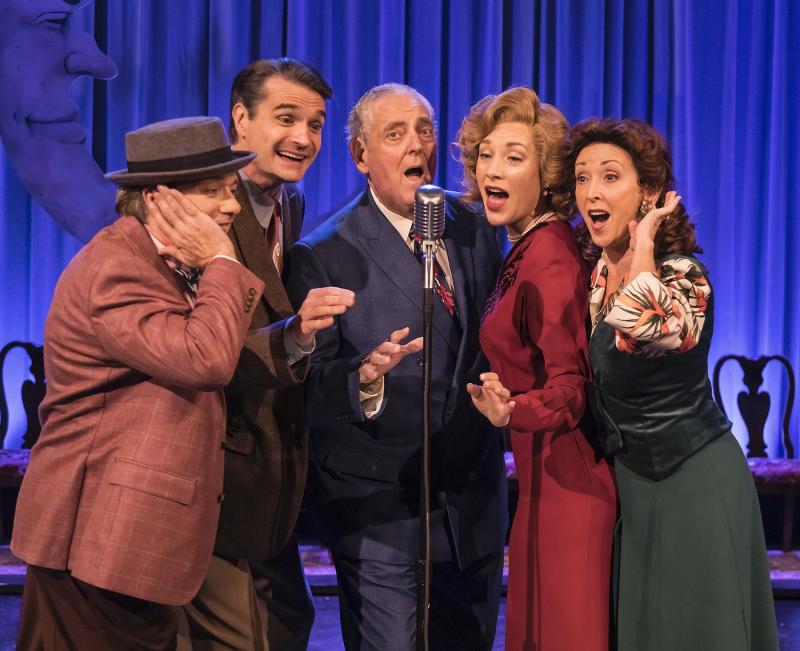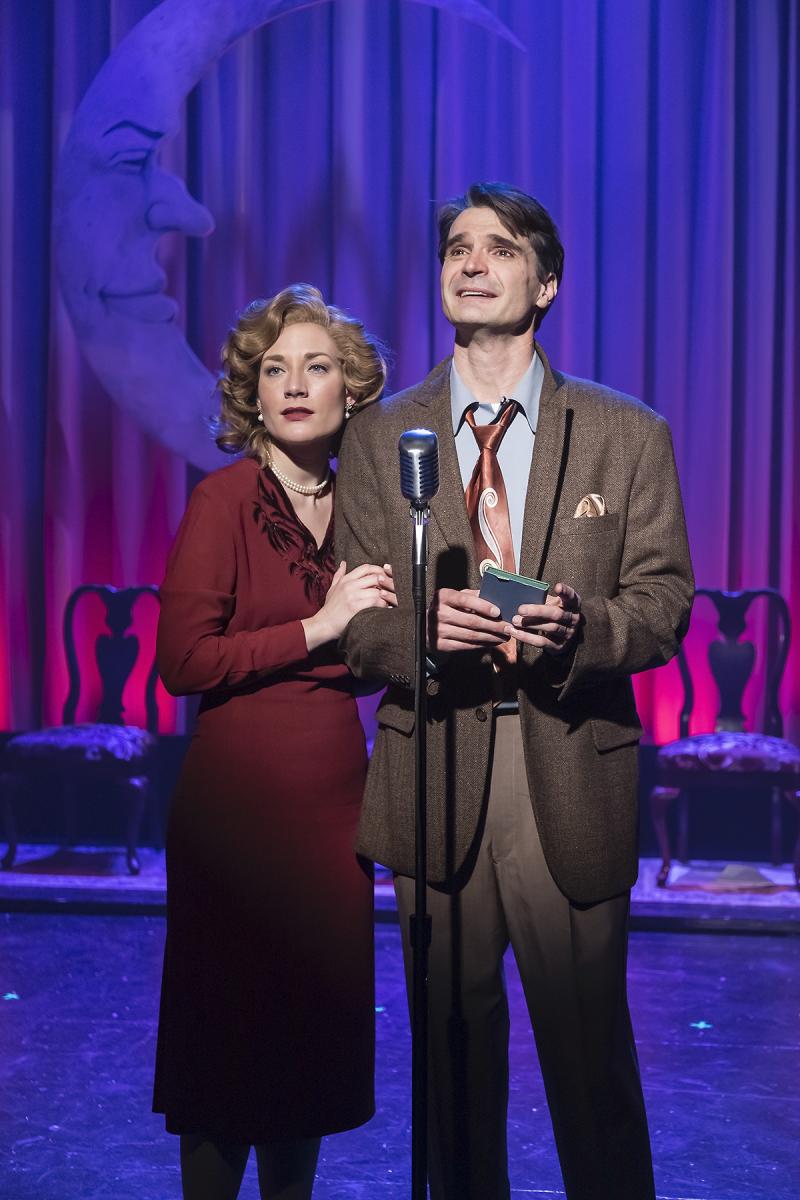Review: IT'S A WONDERFUL LIFE: A LIVE RADIO PLAY at Ensemble Theatre Company

It's a Wonderful Life, Frank Capra's classic film about second chances and a readjusted outlook, has become a Christmas-season staple. It hits heavily on sentiments of forgiveness and generosity despite dearth, and hails the closeness of family and community as the true riches of man. In 1940s little-town Bedford Falls, George Bailey toils at the Bailey Brothers Bank and Loan, an under-performing financial institution that invests in real estate so the townsfolk can own their homes instead of renting tenements from wealthy slumlord, Mr. Potter. But George is dissatisfied with what he deems a small-time existence, and longs to live up to greater potential. When his dotty uncle (and business partner) loses a substantial sum of money on the day of the bank examiner's visit, George's morale plummets. Suddenly he's faced with raising almost 10 thousand dollars in a matter of hours to save himself from prison. He tries to borrow the money from Mr. Potter against a meager life insurance policy, to which Potter notes that George is worth more dead than alive. With these words ringing in his ears, George considers suicide to save his wife and four young children from financial disaster.
Enter Clarence, a bumbling guardian angel, who swoops in to distract a wild-eyed George from jumping off a bridge. Upon discussion of his plight, George comments that the world would be better if he'd never been born, inspiring Clarence to whirl him into a vision of a Bedford Falls that has never known the largess of George and the Bank and Loan. George stumbles through a dark world overtaken by Potter's greed, and discovers that while he never achieved fame or fortune, his effect on the town was immeasurably positive. When he's brought back to reality, his perception of life has changed: he realizes his family and the community he's built is his true priority, rather than his obsession with his previous definition of success.

This is Capra's film. Yes, it's been a Christmas classic for half a century, and on the surface, it's a heartwarming tale about love and forgiveness. But there's a deep rabbit hole of critique about the darker messages of the film, whether they be about the merits or failures of American capitalism; the social implications of George's emotional instability and inferiority complex; and let's not forget the feminist argument that the story should actually be called Mary's a Wonderful Wife and focus on George's saintly spouse and her many sacrifices to keep her aggravated husband happy and the family afloat. It's a film that considers the problems and triumphs of American culture and audiences have long offered differing opinions about who the heroes and villains of Bedford Falls actually are.
Which brings us to Joe Landry's adaptation of the show, It's a Wonderful Life: A Live Radio Play, presented in Santa Barbara by Ensemble Theatre Company and directed by Brian McDonald. This lively version of the story places a group of voice actors on stage, broadcasting from KCRW in the late 1940s. It's a festive party in the Old Vic Theater from the beginning, as actors schmooze the crowd and land a pre-show joke with the announcement that the Foley artist is out for the night, and the actors will be supplying the noises that fill out the production in an onstage corner filled with gadgets for inventive sound creation. The actors (Peter Van Norden as Freddie Filmore; Hannah Tamminen as Sally Applewhite; Teri Bibb as Lana Sherwood; Louis Lotorto as Harry "Jazzbo" Heywood; and Matthew Floyd Miller as Jake Laurents) give impressive performances, playing all 297 of the townspeople, differentiating their voices enough from character to character to keep conversations flowing and bringing an entire town to life.

The play is based on this gimmick, and there's no real outstanding conflict within the world of the players, so the radio-play concept is more "dressing" than it is a reimagining of the story. But there's no problem with that--the story holds up on it's own, and the safe distance between the audience and the conflict (experienced through the filter of jovial actors) provides a production that pushes the most optimistic version of this yarn, one in which George Bailey is unmistakably the likeable but tragically downtrodden hero who's lifted up by his community in a time of need.
Director Brian McDonald does a nice job of keeping the actors rotating around the multiple microphones on stage (or having them add and remove costuming items) to distinguish between multiple characters. The staging is dynamic and the sight gags are clever. The set and lighting (set design by Fred Kinney and lighting design by Jean-Yves Tessier) through most of the production is colorful and well represents the show's retro era. During darker moments when George is maneuvering an upside-down world that doesn't recognize him, the backdrop disappears to reveal a deep void of nonexistence, bringing a hint of cinematic styling to highlight peak crisis. The actors give pleasant and efficient performances, bringing out the warmth and hopefulness of this holiday tale. Ensemble's production highlights humor and heart for an agreeable, well-produced night of festive entertainment.
It's a Wonderful Life: A Live Radio Play
Directed By Brian McDonald
Presented By Ensemble Theatre Company
December 5-22, 2019
Reader Reviews

Videos

